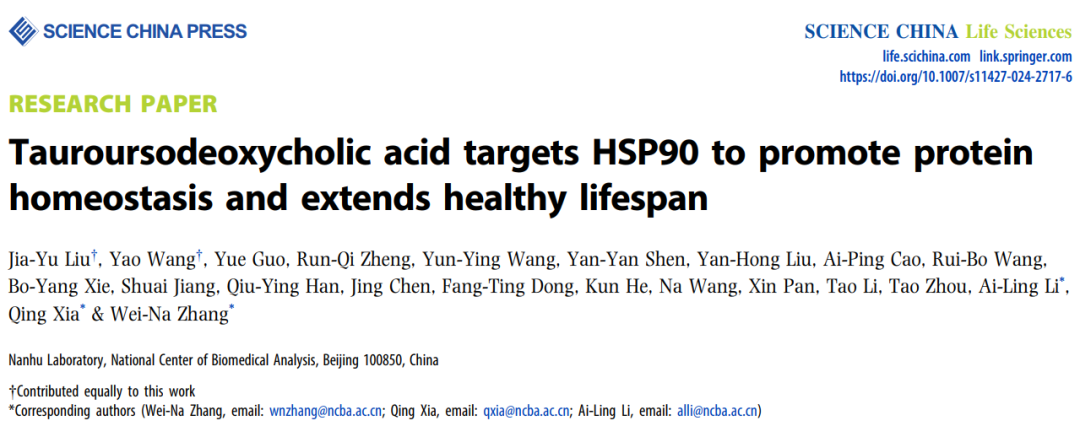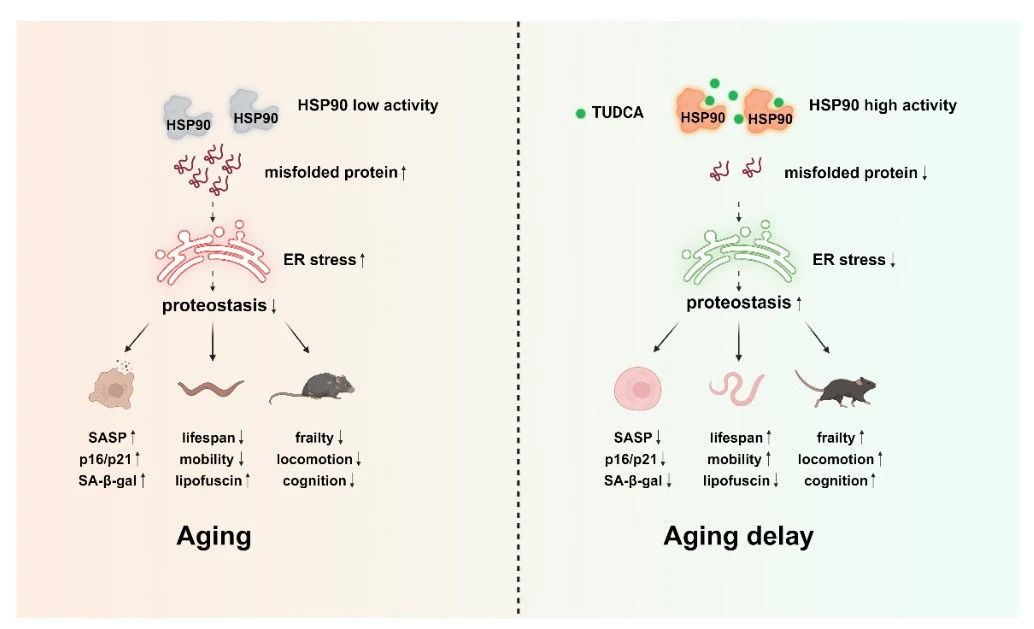In the journal Science China Life Sciences, researchers published an online study titled “Tauroursodeoxycholic acid targets HSP90 to promote protein homeostasis and extends healthy lifespan.” The study found that TUDCA, the primary active component of the traditional precious Chinese medicine bear bile, directly targets the molecular chaperone HSP90 to improve protein homeostasis disorders closely associated with aging, thereby extending lifespan and healthy lifespan. This research reveals a novel role for TUDCA, a safe drug with a long history, in extending lifespan, offering a new anti-aging intervention strategy for the increasingly severe issue of population aging.
In recent years, the global aging population has continued to deepen, and age-related organ dysfunction has become a significant threat to the health of the elderly population and the sustainable development of society. Therefore, in-depth research into aging regulation and the search for effective anti-aging intervention methods hold important scientific and social significance.

Bear bile, known as the “gold of medicine,” is a traditional precious Chinese herbal medicine first recorded in the Shen Nong Ben Cao Jing, with effects including clearing heat, calming the liver, and improving vision. TUDCA is a naturally occurring secondary bile acid and the primary active component of bear bile. In the 1990s, TUDCA was approved by the FDA for the treatment of primary sclerosing cholangitis, primary biliary cirrhosis, and other cholestatic liver and bile duct diseases, with over 30 years of clinical safety history to date. Subsequent studies have revealed that TUDCA not only has therapeutic effects on cholestatic liver diseases but also demonstrates benefits in improving diabetes, neurodegenerative diseases, cardiovascular diseases, and antiviral infections. However, its role in lifespan regulation remains unclear.
The research team utilized a senescence evaluation system based on Caenorhabditis elegans and found that TUDCA significantly extends the lifespan of nematodes. This was further validated through a series of experiments, including measurements of lipofuscin fluorescence levels, body bending frequency, and pharyngeal pumping rate, confirming that TUDCA effectively improves the health status of aged nematodes. while the other two secondary bile acids similar to TUDCA—ursodeoxycholic acid (UDCA) and glycocholic acid (GUDCA)—did not exhibit similar effects. Further studies in mammals revealed that adding TUDCA to the diet of aged mice significantly improved multiple clinically relevant frailty indicators such as kyphosis and erect hair, as well as the mice's locomotor and cognitive functions.
Through whole-genome RNA-Seq analysis of the nematode life cycle, researchers found that TUDCA treatment led to a series of transcriptional changes closely related to anti-aging characteristics. Further experiments using magnetic bead precipitation and molecular docking revealed that TUDCA directly targets the key molecular chaperone protein HSP90, promoting its protein folding activity, reducing the accumulation of unfolded proteins within cells, and improving protein homeostasis to delay aging.
In summary, this study expands the new applications of TUDCA, a natural medicine with a long history of safe use, in prolonging lifespan and healthy lifespan, and provides new insights for targeting protein homeostasis in aging intervention.


